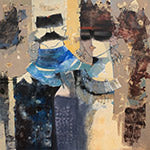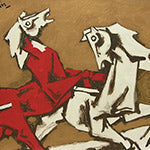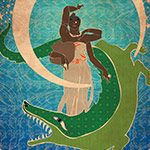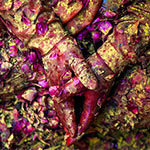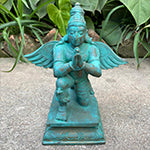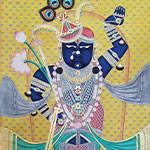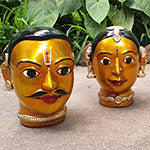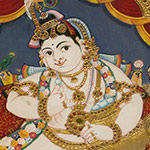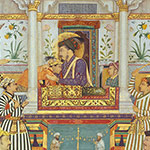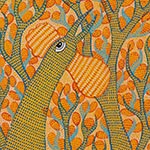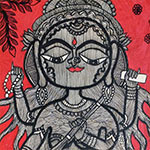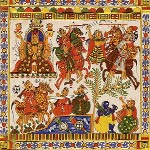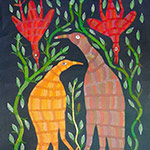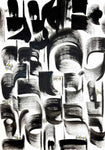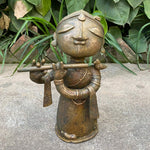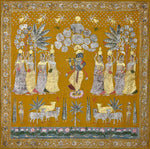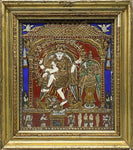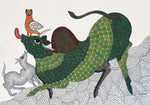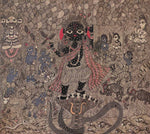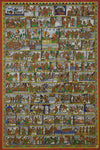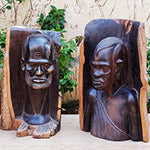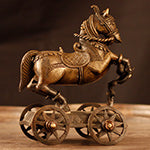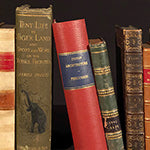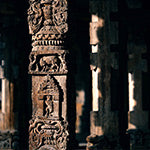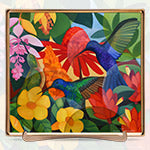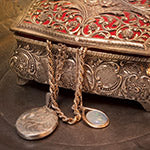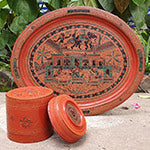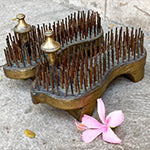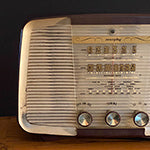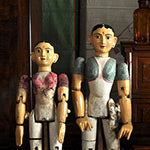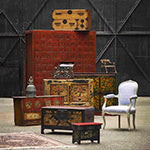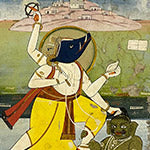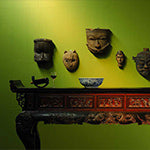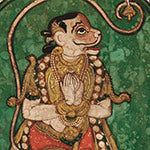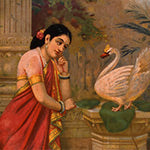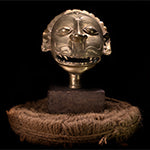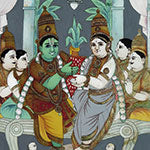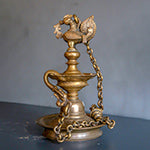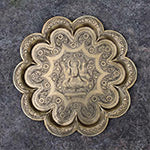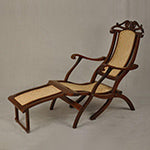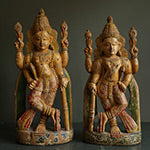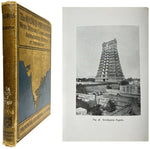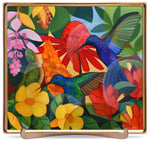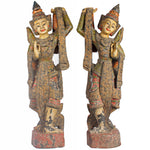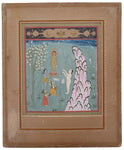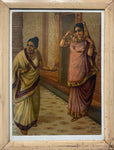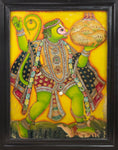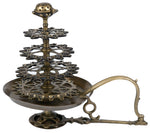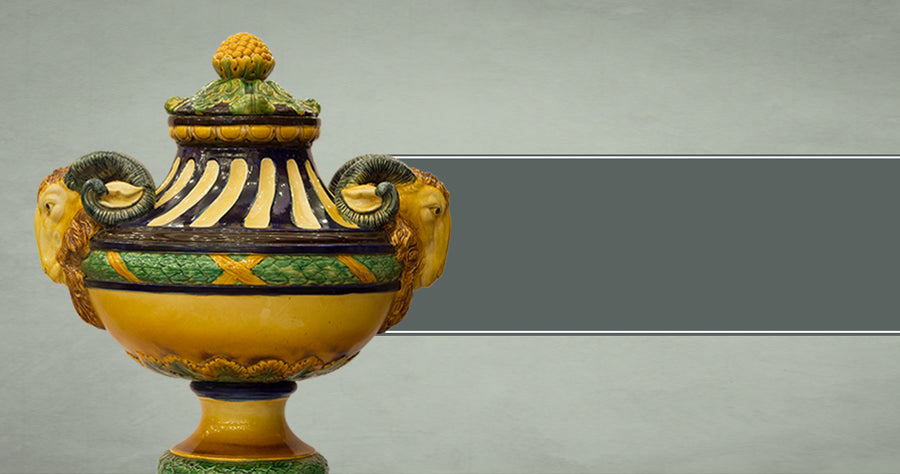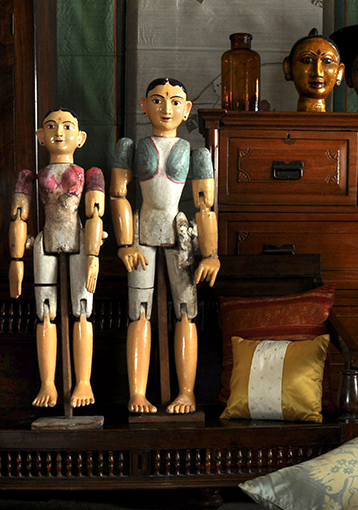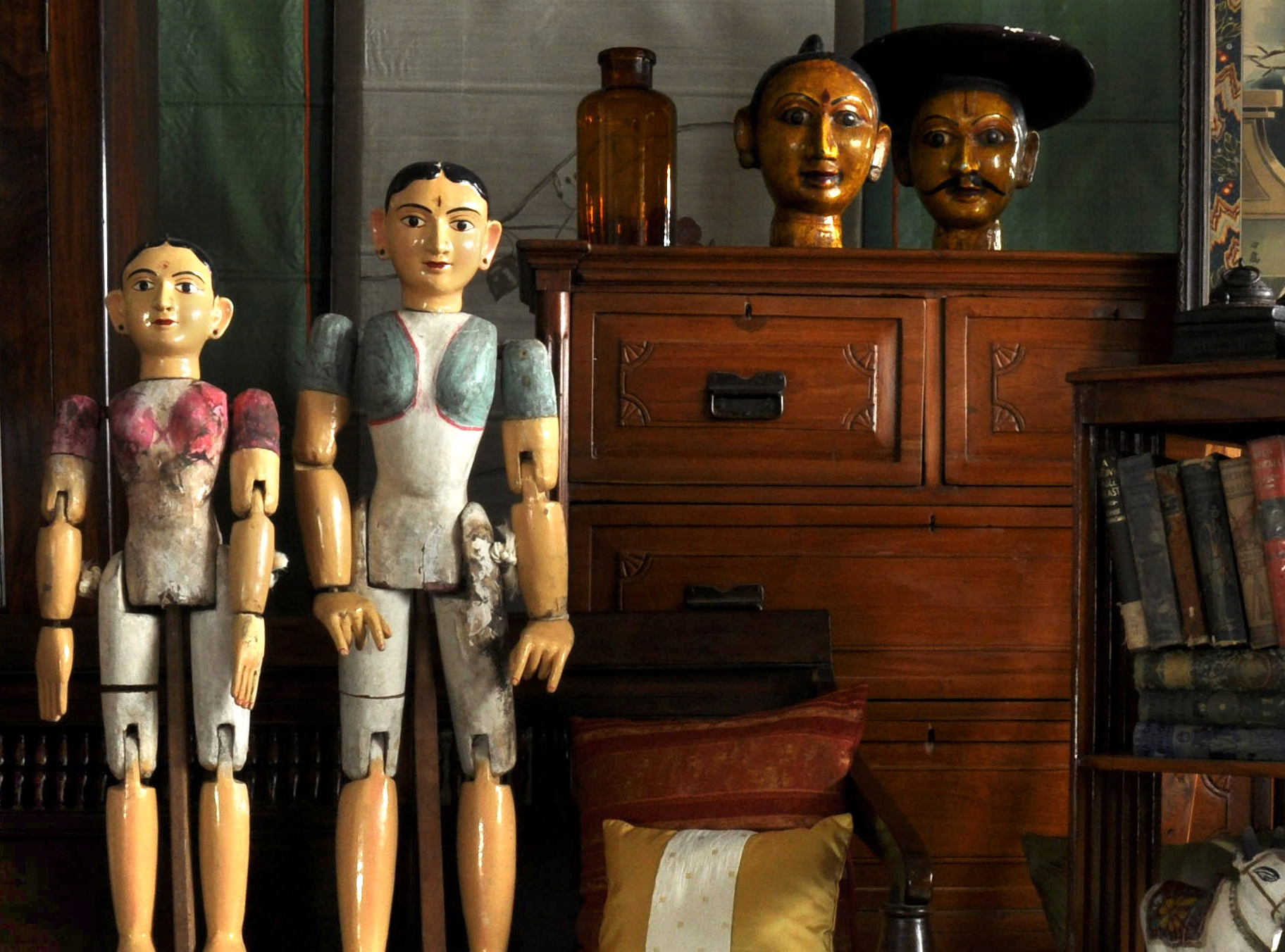Warli Art - Speaking Volumes About India's Tribal Heritage Using Just Two Colours
Art WiseTo the layman, this form of art, though unique, may not be more than just eye-catching stick figures, but Warli art – one of the most unusual tribal art forms of India, is so much more!

A heartfelt depiction of the lives of one of the most remarkable tribes of India - the Warlis, this art form is believed to be a tradition stretching back to 2500 or 3000 BC. Embodied with an amazingly modest colour palette of white and brown (or red), the soothing and earthy tones of Warli Art have enthralled the world for many years.
 (A typical Warli painting depicting a busy village scene)
(A typical Warli painting depicting a busy village scene)
Believed to invoke the powers of the Gods, Warli paintings depicting Gods and Goddesses were originally done only for ceremonial and religious occasions. It was only in the 1970’s, due to the efforts of a Warli art prodigy – Jivya Soma Mashe, along with the Government of India and various NGOs, that paintings portraying the Warli way of life began to be recognized distinctly as art, helping to preserve the rich legacy of the tribe.
 (Warli Art prodigy - Jivya Soma Mashe)
(Warli Art prodigy - Jivya Soma Mashe)
 (An exhibition of Jivya Soma Mashe’s works at the Musee du Quai Branly, Paris in 2010)
(An exhibition of Jivya Soma Mashe’s works at the Musee du Quai Branly, Paris in 2010)
Along with ritual depictions of Gods and Goddesses, Warli paintings typically also depict ordinary tribal life, portraying hunting, fishing and farming scenes, festivals, dances, animals and trees.
Depiction of the Mother Goddess as the symbol of fertility, as well as the "Tarpa dance" are common themes. The tarpa, a trumpet-like instrument played in turns, features often at the centre of the paintings, around whom entwined men and women move in a circle. This is believed to resemble the circle of life.
 (Warli Painting depicting the Tarpa Dance)
(Warli Painting depicting the Tarpa Dance)
Traditionally done on the walls of huts, Warli paintings are characterised by a typical brown or red ochre background, which is often a mixture of earth and cow dung. Using a bamboo stick chewed at the end to make a supple paintbrush, the paintings are created using a white pigment made of rice and gum. In the dim, under-lit homes of the Warli tribespeople, the rice-pigment appears to gleam, almost giving the paintings an ethereal feel!
 Warli painting on a red ochre background (left) and a cow dung background (right)
Warli painting on a red ochre background (left) and a cow dung background (right)
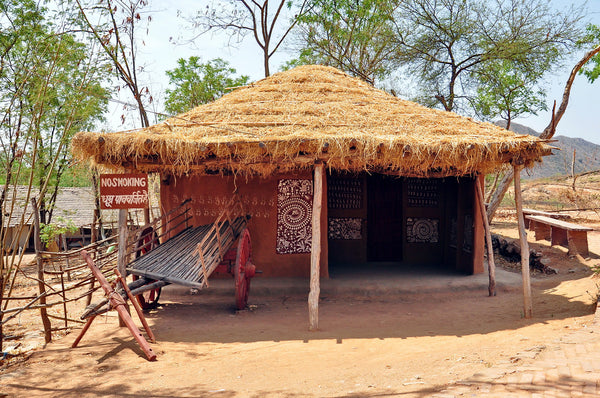 (A typical Warli hut with art work at the Shilpgram Craft Village in the Aravali Mountains; Image Source: Manfred Sommer)
(A typical Warli hut with art work at the Shilpgram Craft Village in the Aravali Mountains; Image Source: Manfred Sommer)
Geometrical shapes play an important role in Warli paintings. Circles represent the sun and moon, while triangles and squares represent mountains, trees and humans. The body of men, women and animals are represented by two triangles joined at the tip, precariously positioned, believed to symbolize the balance of the universe.
 (The use of geometrical shapes to depict humans and animals is a typical characteristic of Warli art. Image source: delcampe.net)
(The use of geometrical shapes to depict humans and animals is a typical characteristic of Warli art. Image source: delcampe.net)
Based on their ancient beliefs and superstitions, the Warli tribespeople are also known for their practice of speaking very little – an often-remarked upon feature of the tribe. It is not that surprising then, that Warli artists put their heart and soul into their paintings, using it as a mode of expression, and a medium to pass down tribal culture and history across generations.
 (A Warli painting by Sunita Sadashiv Mashe)
(A Warli painting by Sunita Sadashiv Mashe)
A visual narration of the rich legacy of one of India’s most ancient tribes, Warli art speaks to us of the significance of man’s relationship with nature and his community. It captures the very ethos of India’s indigenous ancestors, and brings to the forefront a true reflection of India’s rich heritage.


